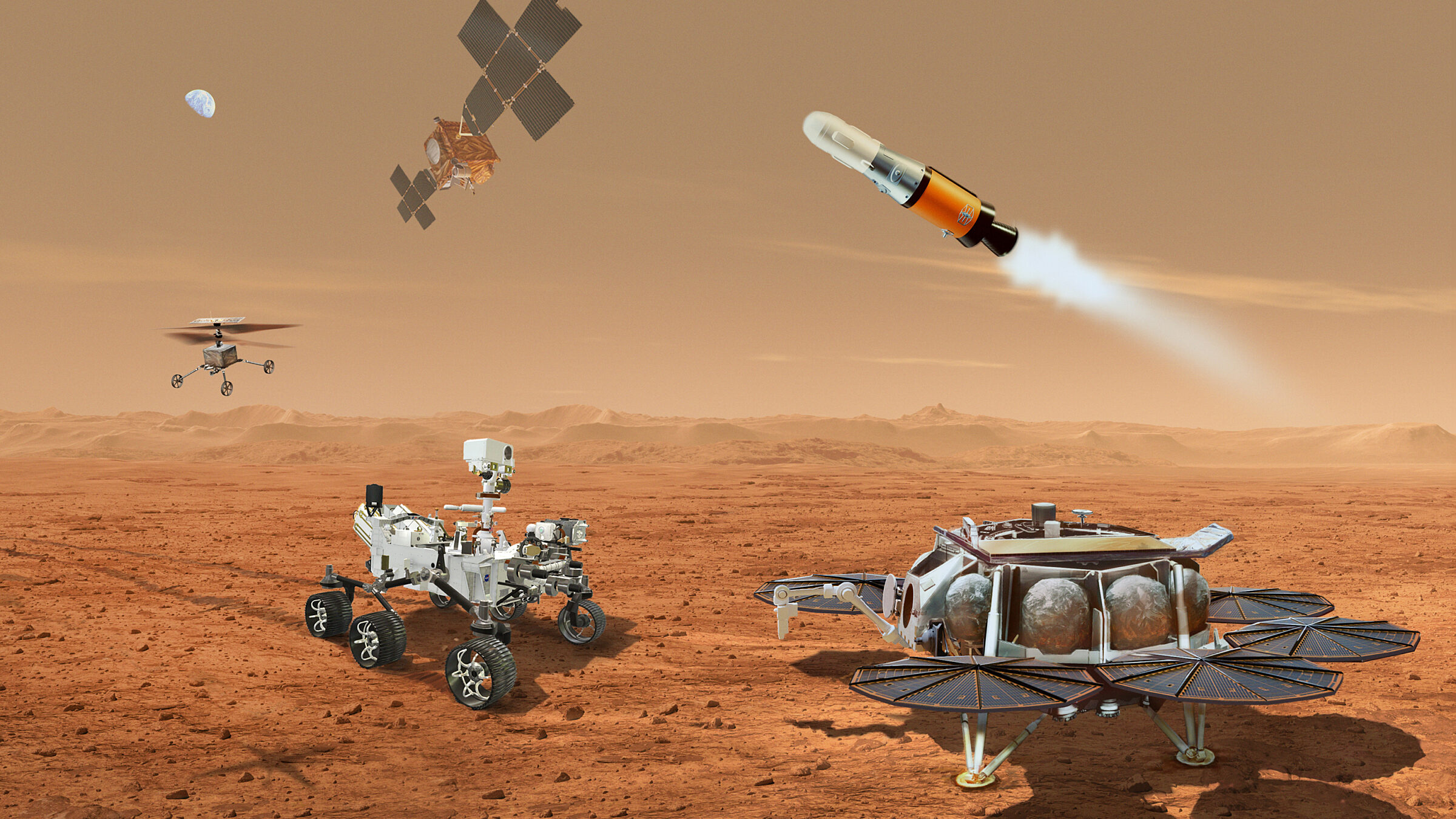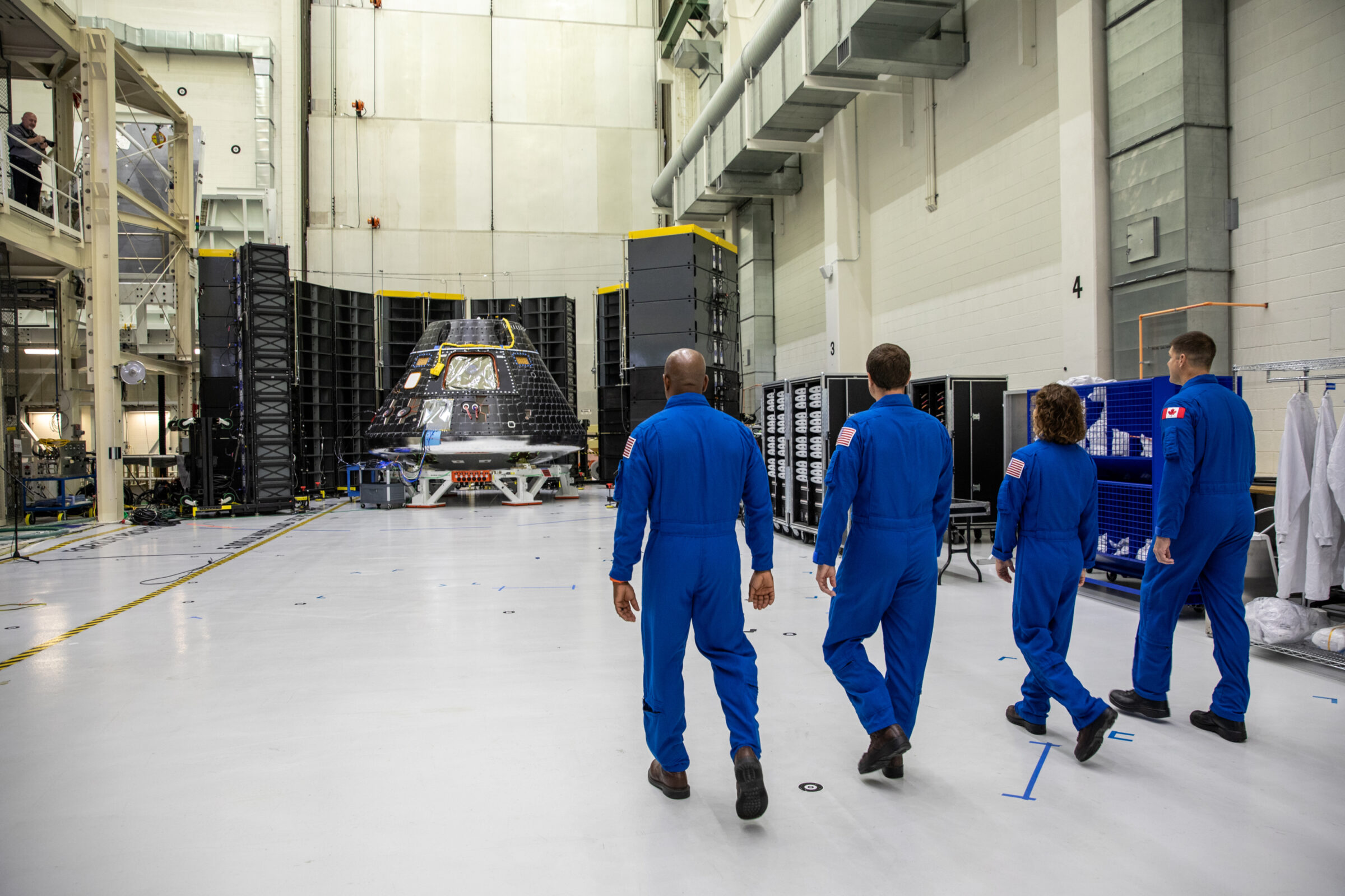Casey Dreier • Mar 25, 2024
NASA's FY 2025 budget request is not enough
Spending caps and inflation cut into NASA’s ambitious plans for the future
The Biden Administration released its 2025 budget request for NASA on March 11, 2024. Under this proposal, NASA's topline would grow by 2% relative to 2024, to $25.4 billion. The budget also projects regular 2% topline increases to the space agency in the coming years, reaching $27.5 billion by 2029.
This is a substantial departure from the Biden Administration's prior aspirations, which last year had projected growth to nearly the same amount — $27.2 billion — by 2025. The difference between last year's projection and the actual request is nearly $1.8 billion.
Inflation further compounds the problem. Even though the 2025 budget nominally provides a 2% bump relative to 2024, it would still represent a $2 billion loss in buying power for NASA since 2020. Even the projected 2% annual growth will not keep pace with inflation, resulting in a slow bleed of resources from the space agency in the coming years.
NASA topline amounts, with FY 2025 PBR projections through 2029, all normalized to 2025 dollars. Inflation calculations are from NASA's New Start Index using historical adjustments through 2024 and then an estimated average of 2.6% annual inflation starting in 2025.
Spending constraints passed by Congress are behind this change of fortune. In the summer of 2023, a divided Congress effectively froze total federal spending on agencies like NASA for fiscal years 2024 and 2025. The Biden Administration is working within this cap.
That said, this budget makes decisions within those constraints that inject uncertainty into the United States's space science and engineering workforce, pit missions and scientific communities against each other, threaten the cohesion of the planetary science community, and limit the pursuit of new scientific breakthroughs.
The Science Mission Directorate
The request for NASA's Science Mission Directorate (SMD) is $7.6 billion. This is $231 million more than 2024 but $226 million below its 2023 amount. Of NASA's $2 billion loss of buying power since 2020, half—$1 billion—will come from the SMD in this proposal, even though science comprises only a third of the space agency's total budget.
As a consequence, the FY 2025 budget request cancels, defers, or leaves a number of key projects in states of profound uncertainty. This money proposed simply cannot enable the major priority projects in Heliophysics, Planetary Science, Earth Science, and Astrophysics recommended by the scientific community via the decadal survey processes.
Annual budgets for NASA's Science Mission Directorate (SMD), including projections from the FY 2025 budget request. All normalized to 2025 dollars. Inflation adjustments via NASA's New Start Index.
Notably, the flagship mission from Heliophysics, the Geospace Dynamics Constellation, is outright canceled. The Habitable Worlds Observatory project, now ensconced into a program office thanks to congressional action in 2024, does better, receiving $50 million to pursue technology maturation efforts as directed by the Astrophysics Decadal Survey, though this is far from the amounts needed to pursue the full project in the 2030s.
If these budgetary trends continue, no top-priority flagship missions — which require billions of dollars over the coming decade — will be possible within a balanced portfolio in any of NASA's science divisions, whether it be Mars Sample Return, Habitable Worlds Observatory, or the Geospace Dynamics Constellation.
Planetary Science Division and Mars Sample Return

Under this proposal, the Planetary Science Division would receive $2.7 billion in FY 2025, $500 million less than in 2023 and a mere $15 million more than the enacted 2024 levels.
Many projects stand to receive solid funding. Dragonfly and NEO Surveyor are supported for 2028 launch dates, VERITAS is restored (though delayed until 2031, along with DAVINCI), commercial lunar payload missions continue at a brisk pace, and funding for fundamental research would increase. However, the start of the next generation of small- and mid-class planetary missions is delayed until 2026 due to the cost growth of both Dragonfly and the two Venus missions.
NASA's planetary science budget, with Biden's FY 2025 proposal. Adjusted for inflation. and normalized 2025 dollars using NASA's New Start Index. Source: Planetary Science Budget Dataset, compiled by Casey Dreier for The Planetary Society (accessible on Google Sheets or downloadable as an Excel file).
Mars Sample Return (MSR), the top priority of the planetary science community in the coming decade, is of particular concern. It emerged from the 2024 budget battered and bruised, with "no less" than $300 million, a far cry from the previous year's $822 million allocated by Congress. The project did, however, secure budgetary flexibility, and NASA can spend upwards of $949 million if necessary. However, the Planetary Science Division, which accounts for the budget of MSR, was itself cut by nearly $500 million. Exactly how much the project needs in 2024 is to be determined, as it is paused pending the results of an internal review and re-formulation.
Anyone seeking clarity on MSR in the FY 2025 budget was sorely disappointed. Instead of a budgetary request for the program, Mars Sample Return received an unprecedented placeholder of "TBD":

This is exceedingly rare, if not outright unique in the history of NASA budget proposals. In the most generous interpretation, the White House's Office of Management and Budget, which approves and controls funding requests to federal agencies, was reluctant to request any funding until NASA announced its path forward for MSR, despite clear support for the value of the project and NASA's science portfolio writ large in the FY 2024 appropriations report.
This is not entirely unreasonable. However, the Planetary Science budget remains frozen at $2.7 billion in this proposal, $500 million less than it received in 2023 when MSR was funded at $822 million. NASA leadership has stated that any restart of Mars Sample Return in 2025 will not augur an increase to the Planetary Science Division's budget. And while there appears to be $200 million tucked away in the planetary division's Outer Planets account, seemingly reserved for MSR's restart, that is far from enough to pursue even a leaner and lower-cost sample return effort. Any additional funding for MSR will be cannibalized from other projects.
This is not a supposition. The budget request itself says that due to MSR: "funding levels for Planetary Science missions are subject to change." Or, to rephrase it slightly: "that's a nice budget for planetary science you have there — would be a shame if anything happened to it".
The Office of Management and Budget, essentially the White House's accounting office, controls the budget proposal process and has historically been skeptical of large science missions like MSR. The fact that the FY2025 president's budget neglected to request any money for MSR, but went to great lengths to specify alternate budgetary scenarios for other missions — scenarios it itself says are not realistic — will only serve to drive a further wedge between MSR and other planetary priorities. Though the top priority of the current planetary decadal survey, there has been consternation among the scientific community regarding its cost and lack of near-term scientific return, and a persistent worry that MSR might grow so large as to imbalance, disrupt, and delay other important planetary science missions. The Planetary Society, while supportive of MSR, believes strongly in maintaining balance across NASA's science portfolio.
The budget request appears to lay a trap for Mars Sample Return. NASA leadership would be wise to avoid springing it.
NASA must secure a supplemental request for MSR’s restart, and Congress must be willing to restore funding to the science directorate to support it. It is neither reasonable nor realistic to expect a restart of Mars Sample Return with half a billion dollars missing from NASA’s science budget.
Artemis and Human Spaceflight

Annual budgets for NASA's Deep Space Exploration Systems, including projections from the FY 2025 budget request. This incorporates funding for the SLS, Orion, Human Landing System, Gateway, and related systems. All normalized to 2025 dollars. Inflation adjustments via NASA's New Start Index.
Project Artemis has cleared two hurdles that felled prior attempts to return humans to the Moon: the first was surviving a Presidential transition in 2021; the second, in 2024, was securing a congressional budget that grew funding for Artemis despite a decrease in NASA's topline. The diverse political coalition behind Artemis has proven resilient, and will likely do so again. That doesn't spare Artemis from feeling the pinch, though its overall funding position remains strong. Compared to 2024, Artemis's budget would decrease by only ½ of 1%. Funding does shift around some, with Orion and SLS's shift into production status freeing up funds used to bump up funding for new lunar spacesuits (+14%) and continue the Gateway station development, and $1.9 billion to support the two companies creating the new human lunar landers, SpaceX and Blue Origin.
Of course, inflation impacts Artemis as much as any other directorate at NASA, and a flat budget relative to 2024 still amounts to a loss of nearly $200 million in buying power. Artemis, however, is structured quite differently than NASA's science missions, having leveraged fixed-price or services-based contracts for the majority of its components. This means that Artemis is, in theory, somewhat protected from inflation, as these contracts generally place the onus of cost growth on the industry partner, not NASA. The SLS and Orion projects are moving out of development and into a regular production cadence, meaning that their costs are unlikely to spike, barring some significant hardware failure or as-of-yet-undiscovered design flaw.
Conclusions
This is not a growth budget. Most projects continue, few are started, and some are cancelled or delayed. The Biden Administration was placed in a difficult position due to the spending limits imposed by Congress, but still made questionable choices that will exacerbate festering funding problems — particularly in its science directorate. Inflation further undermines NASA's upcoming agenda; even modest-seeming funding downturns are more painful as a consequence.
Congress, though the ultimate source of NASA's budgetary problems due to the 2023 spending caps, can also be the solution. NASA's Science Mission Directorate budget must grow relative to inflation, not shrink, to both ensure the nation's continued leadership in space and the pursuit of transformative scientific discoveries, as well as maintain the cohesion and stability of its scientific and engineering workforce.
In ideal circumstances, we'd want to see a Science Mission Directorate budget closer to $9 billion, a modest 4% increase over its inflation-adjusted peak in 2020. That would enable the pursuit of all top-priority science projects across the science portfolio, along with strong support for fundamental research and small- and medium-class missions in all divisions.
That is an optimistic scenario given the spending limits already in law and the upcoming election season in the U.S., which will very soon come to dominate the political process and very likely delay any budgetary resolution until late 2024 or early 2025.
The Planetary Society will engage with Congress in the coming year to address these budgetary shortfalls and to ensure direction and support for top-priority missions within a balanced NASA science directorate.
You can help by writing your representatives in Congress to promote a robust science budget for NASA in FY 2025.
NASA's FY 2025 Budget
The White House proposed $25.4 billion for NASA in 2025, a modest increase from the previous year, and far less than originally planned.
Support our core enterprises
Your support powers our mission to explore worlds, find life, and defend Earth. You make all the difference when you make a gift. Give today!
Donate

 Explore Worlds
Explore Worlds Find Life
Find Life Defend Earth
Defend Earth


